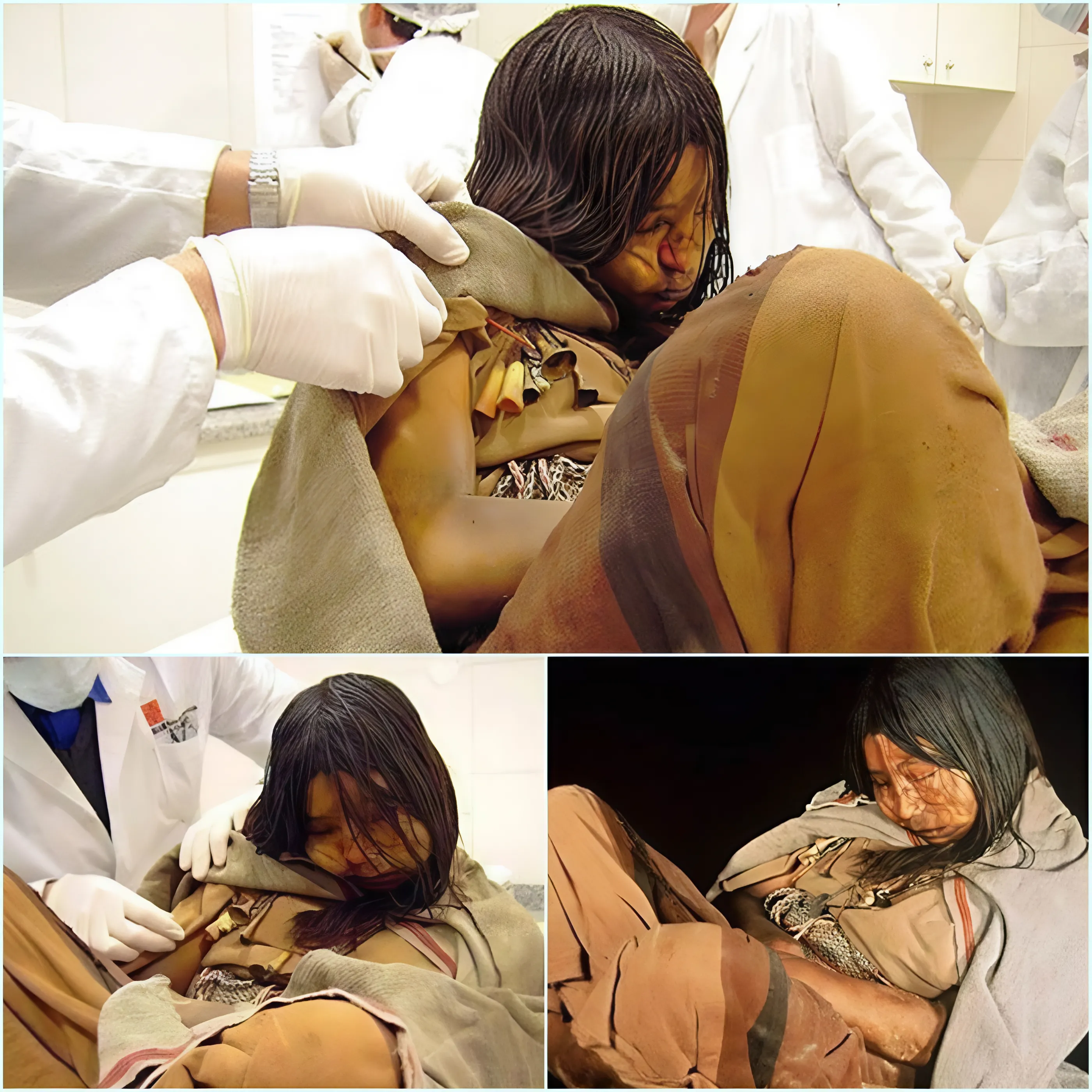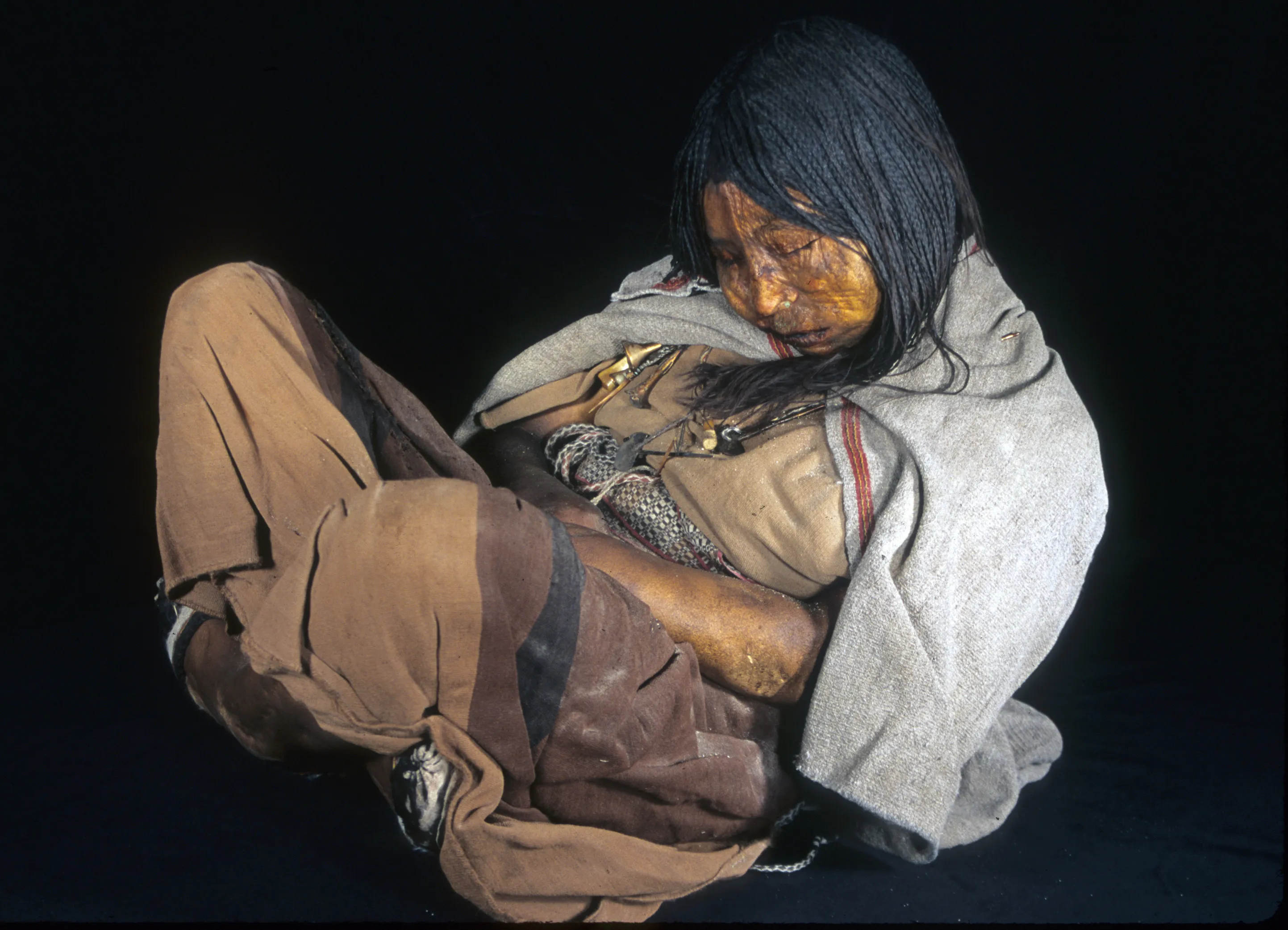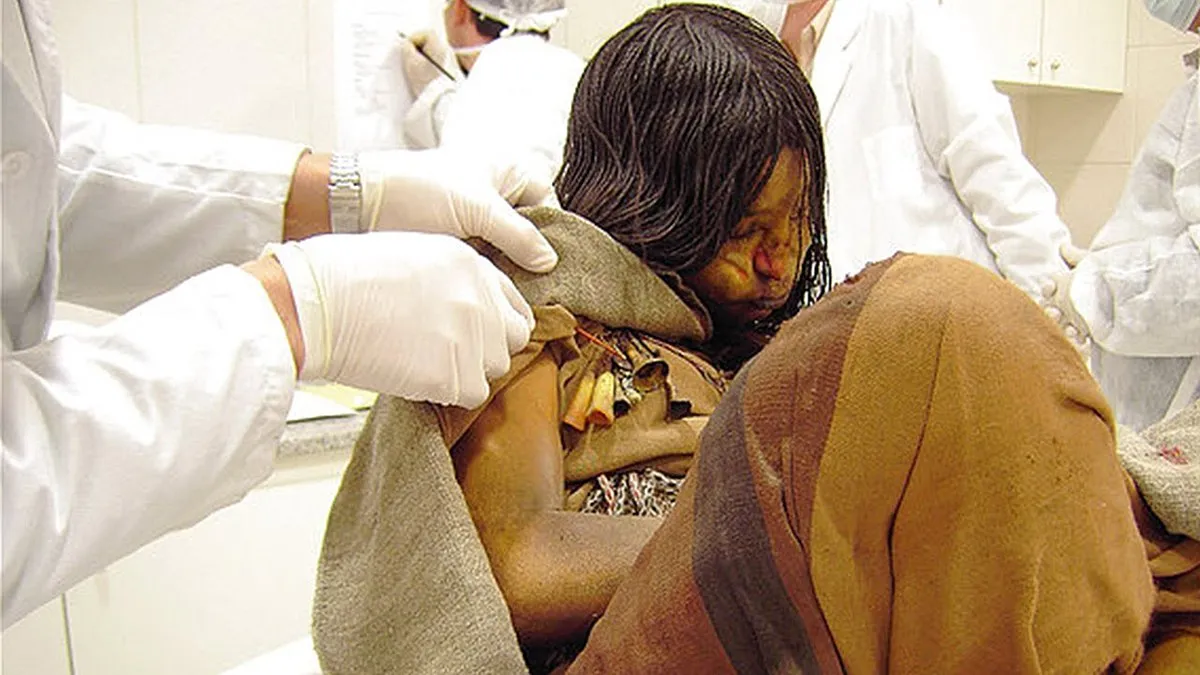The Children of Llullaillaco, also known as the Mummies of Llullaillaco, were three Inca child mummies discovered on March 16, 1999, near the summit of Llullaillaco, a 6,739 m (22,110 ft) stratovolcano on the Argentina–Chile border. These mummies, sacrificed 500 years ago, were meticulously prepared with drugs and alcohol before their deaths. Johan Reinhard, who led the archaeological team, described them as “the best preserved Inca mummies ever found,” a sentiment echoed by other experts who consider them among the world’s best-preserved mummies.

La Doncella, known as the “Maiden of Llullaillaco,” is the mummy of a 15-year-old Incan girl. Examination revealed a bacterial infection in her lungs. She was adorned in a dress with elaborately braided hair and a feathered headdress. DNA analysis confirmed she and another girl were half-sisters, though the boy was unrelated. La Doncella passed away peacefully in her sleep, a fate shared by the other children.

La Doncella is believed to have been an aclla, or Sun Virgin, selected and consecrated around the age of ten to live among other chosen girls and women who would serve as royal wives, priestesses, and sacrificial offerings. In Inca society, ritual sacrifices were performed to ensure community health, bountiful harvests, and favorable weather conditions.


